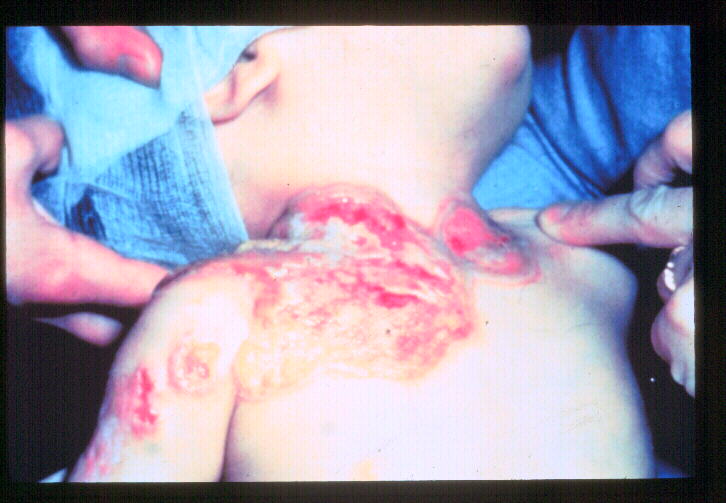
Vaccinia
Progressive vaccinia/vaccinia necrosum, Eczema vaccinatum, Generalized
vaccinia, Fetal vaccinia
Progressive vaccinia (vaccinia necrosum, vaccinia gangrenosa) is a severe, potentially fatal illness characterised by progressive necrosis at the vaccination site, often leading to metastatic lesions. It was observed almost exclusively among immunodeficient persons. Treatment with vaccinia-immunoglobulin was rarely effective. The figures published are 0.8 (Centers for Disease Control, 1991) and 1.6 cases of progressive vaccinia per million vaccinations, with a case fatality rate of almost 90% (Kaplan, 1989). http://www.bats.ch/abstr/197k2a14.htm

Smallpox (Variola). These are eczema vaccinatum lesions on the skin of
a smallpox vaccine recipient. Persons who have ever been diagnosed with eczema
or atopic dermatitis should not be vaccinated unless the benefit is considered
to outweigh the risk, even if the condition is currently not active, for they
are at a high risk of developing eczema vaccinatum, a potentially severe,
sometimes fatal complication.
http://aapredbook.aappublications.org/week/iotw030308.shtml

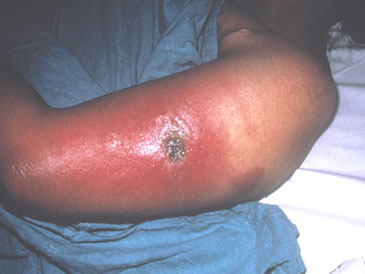 Progressive vaccinia (vaccinia necrosum) in patient with chronic granulocytic leukemia. Photo courtesy of John M. Leedom, M.D. |
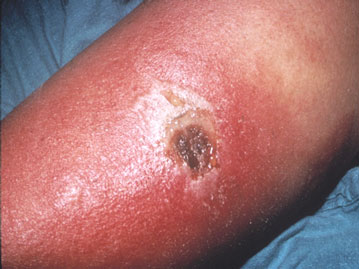 Another view of progressive vaccinia (vaccinia necrosum) lesion in patient with chronic granulocytic leukemia. Photo courtesy of John M. Leedom, M.D |
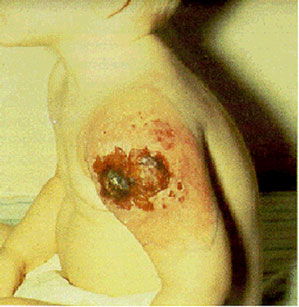 Progressive vaccinia (vaccinia necrosum), which was fatal, in a child with an imunodeficiency. [from Fenner F., Henderson DA, et al. Smallpox and its Eradication. WHO. 1988]. Reprinted with permission of WHO. Original photo by C. H. Kempe |
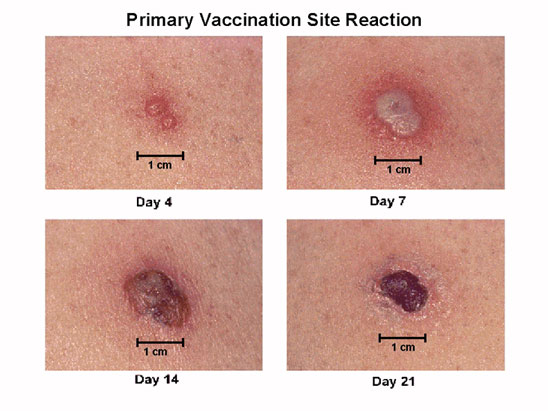 Major (primary) reaction – Expected vaccine site reaction and progression following primary smallpox vaccination or revaccination after a prolonged period between vaccinations. Multiple pressure vaccination technique used. Source: CDC. |
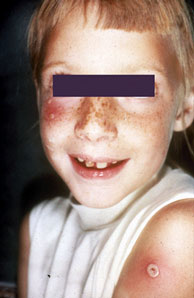 Accidental auto-inoculation of cheek with vaccinia virus, approximately 5 days old. Primary take on arm, 10-12 days old. Photo courtesy of John M. Leedom, MD. |
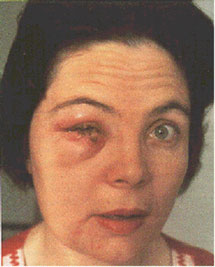 Accidental auto-incoculation of lower eyelid with vaccinia virus. [from Fenner F., Henderson DA, et al. Smallpox and its Eradication. WHO. 1988]. Reprinted with permission of WHO. Original photo by C. H. Kempe (CDC) Ocular vaccinia following inadvertent autoinoculation with vaccine. This complication can cause corneal scarring and hence visual impairment. Ocular vaccinia should be treated aggressively with a topical antiviral drug under close ophthalmological supervision. Reprinted with permission from Fenner F, Henderson DA, Arita I, Jezek Z, Ladnyi ID. Smallpox and Its Eradication. Geneva, Switzerland: World Health Organization; 1988: 298. Photograph by C. H. Kempe. http://ccc.apgea.army.mil/Documents/HTML_Restricted/chapters/chapter_27.htm |
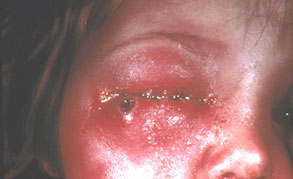 Accidental auto-inoculation of eyelid with vaccinia virus with concurrent cellulitis. Photo courtesy of John M. Leedom, M.D. |
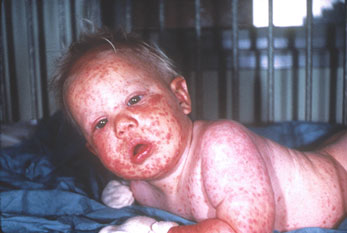 Generalized vaccinia in an apparently normal child. Recovered without sequelae. Photo courtesy of John M. Leedom, M.D. |
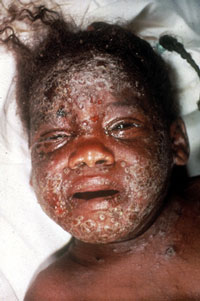 Eczema vaccinatum. Photo courtesy of John M. Leedom, M.D. |
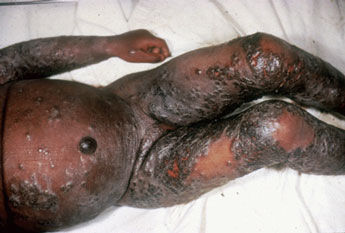 Eczema vaccinatum. Photo courtesy of John M. Leedom, M.D. |
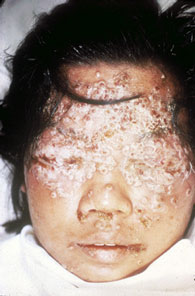 Eczema vaccinatum in contact to recently vaccinated child. Recovered without sequelae or permanent ocular damage. Photo courtesy of John M. Leedom, M.D. |
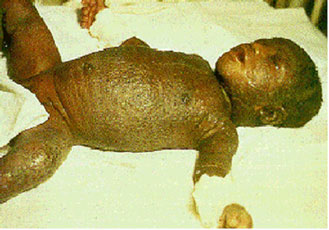 Eczema vaccinatum in an unvaccinated contact to a vaccinated sibling. [from Fenner F., Henderson DA, et al. Smallpox and its Eradication. WHO. 1988]. Reprinted with permission of WHO. Original photo by I. D. Ladnyi. |
http://www.bt.cdc.gov/Agent/Smallpox/VaccineImages3.asp
 Mrs Helen Goates of Bolivar, Missouri. Cancer from vaccine. |
 Benjamin Olevine of Altoona, Pennsylvania. Tumour
developed from vaccine sore. Benjamin Olevine of Altoona, Pennsylvania. Tumour
developed from vaccine sore. |